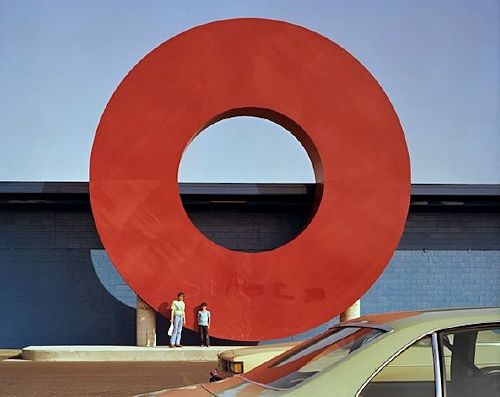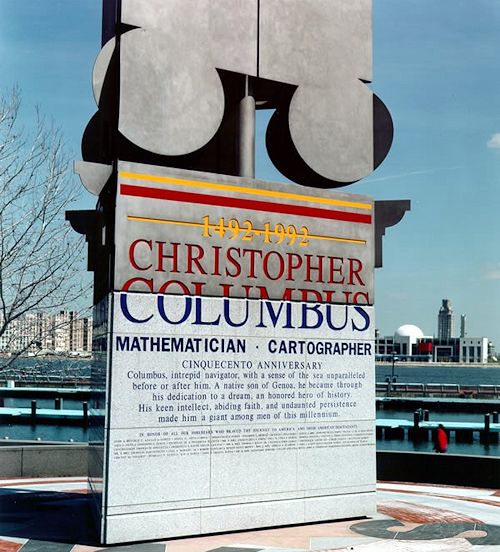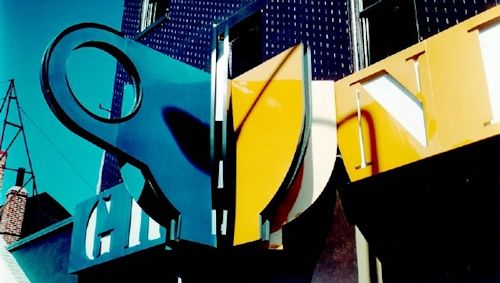2015.04.23 10:36
Archinect's critical round-up for the new Renzo Piano-designed Whitney Museum
davvid, assuming you're in NYC, do you have any thoughts on how the New Whitney Museum compares with the New Museum? I'm just curious, as I only know these buildings from pictures. For example, is the New Whitney much larger than the New Museum? (--if I were to just guess, the New Whitney seems about double in size.) Does the New Whitney lack the "aesthetic refinement" of the New Museum? Since both these new museums are 'stacked' (Koolhaas's "culture of congestion"?), I imagine there's something to learn from a compare/contrast.
2015.04.23 13:04
Archinect's critical round-up for the new Renzo Piano-designed Whitney Museum
davvid, thanks. First off, I have yet to own a mobile phone, so I've never used Instagram.
Aha, the New Whitney is almost 3.5 times the size of the New Museum--the New Whitney actually does have the look of a behemoth, doesn't it? Jason already mentioned the New Whitney's welcome interaction with the city, and the notion of windows and balconies/outdoor space on every level certainly reinforces that. Makes me wonder if 'stacked' public institutions of the future will continue to take advantage of higher-up inside-outside opportunities.
Yesterday I was thinking about another compare/contrast of the New Whitney and the Philadelphia Museum of Art. The PMA is about 90 years old now, and it too is at the terminus of an urban greenway--the Benjamin Franklin Parkway. The whole scheme was part of what was called the "City Beautiful Movement"--very 'Beaux Arts' urbanism in conception and execution. Now, in NYC almost a century later, there's the New Whitney at the terminus of another new urban greenway--the Highline. Some might (want to) say this new scheme is all about a "City Ugly Movement," and it may well be not all that "overly attractive", but it seems to be at least a more mature type of urbanism. Donna earlier mentioned the 'ad hoc-ness' of the New Whitney design, and the same may be said about the approach of the urbanism--more using what you have than starting completely over to produce some idealized image. Maybe the "City Bricolage Movement."
Sometime around 2002.11.10 NYTimes architecture critic Herbert Muschamp wrote:
"Elizabeth Diller and Ricardo Scofidio have defined a new building type for the contemporary city: the urban viewing platform. Invention of this caliber doesn't turn up every day. Diller and Scofidio could spend the rest of their careers reworking this one idea over and over again and not be judged harshly for repeating themselves. The basic concept is that good, and its potential applications are various. Many cities will want to try out variations on the theme. But Boston will receive the first authentic edition in 2004, when the city's Institute of Contemporary Art is expected to open its doors."
I went on to criticize this with:
The "urban viewing platform" is NOT a new invention created by Diller and Scofidio. Every time I visit the Philadelphia Museum of Art I also visit a quite remarkable "urban viewing platform."
Anyway, it's now interesting, and indeed fortunate, that the New Whitney Museum has a relative abundance of art viewing platforms and "urban viewing platforms."
2015.04.26 11:16
what is 'beauty' in Architecture?
Sinclair Gaudlie's Architecture: the appreciation of the arts/1 (1969) comes to mind.
Contents
1. The Nature of the Art
2. Communication and Interpretation
3. The Roots of Ugliness
4. The Source of Delight
5. Scale, Order, and Rhythm
6. Weight, Force, and Mass
7. The Awareness of Space
8. The Dialogue of Space and Structure
9. The Dialogue Continued
10. The Play of Shape
11. The Enrichment of Form
12. The Play of Light
13. Judgment and Design
14. Eloquence, Aptness, and Style
15. Place, Time, and Society
The first footnote in "The Roots of Ugliness" reads:
By 'critic', here and elsewhere, I do not, of course, mean a professional fault-finder but rather the kind of observer who can voice opinions which command respect because the assumptions on which they are based are clearly more than unthinking prejudices. And I assume it to be a characteristic of the good critic that he is perpetually testing his assumptions against new experience.
Now, if only there was a way to quiet the non-professional fault-finders.
| |
2015.04.27 11:09
what is 'beauty' in Architecture?
"Cultures, he argued, need the challenge of new forms if they are not to settle into complacency or, worse, terror.
His target here is what he calls 'realism'. Realism, he claims, reaffirms the illusion that we are able to seize hold of reality, truth, the way things "really" are.
Realism, Lyotard argues, protects us from doubt. It offers us a picture of the world that we seem to know, and in the process confirms our own status as knowing subjects by reaffirming that picture as true. Things are, humans are, and, above all, we are just as we have always supposed.
Postmodernity, in Lyotard's account, specifies a different literary and artistic mode rather than a particular period. Duchamp's challenge to realism is intelligible as postmodern. 'You want realism?' Richard Mutt's urinal seemed to ask. 'I'll give you reality itself, a readymade urinal, exactly the kind you see every day'. Er, that is, the kind men see every day. Well, Western men, anyway. Reality itself, when you come to think of it, is also culturally relative."
--Catherine Belsey
2015.04.30 12:22
‘Architecture is now a tool of capital, complicit in a purpose antithetical to its social mission’
Public funded housing throughout the 20th century provided a multitude of big commissions for architects, often at times when big architecture commissions were difficult to come by.
It's not a stretch then to see architects advocating public housing as a means for there being more architectural commissions available, as well as for the greater good.
2015.05.01 14:33
Pompidou responds to "fascist" Le Corbusier claims



Le Corbusier was here?
| |
2015.05.01 16:34
Odd Architectural Details

demolished 1998
2015.05.01 16:40
Odd Architectural Details

Still wonder if there will ever be a concise study of Venturi's 3-dimensional design of 'flatness'.
2015.05.01 16:47
Odd Architectural Details
for example...

|